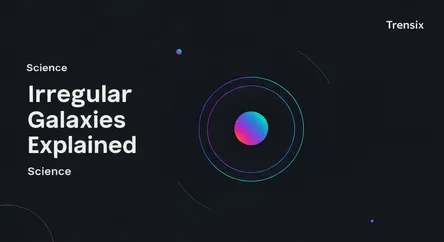Science
Irregular Galaxies Explained

Discover irregular galaxies, the cosmic mavericks with no defined shape. Learn why these unique structures are vital for understanding star formation.
What is it?
An irregular galaxy is a galaxy that lacks a distinct, regular shape, unlike a spiral or elliptical galaxy. Their appearance is often chaotic, with no clear central bulge or spiral arms. Rich in the gas and dust needed to create new stars, many irregular galaxies are thought to have been distorted by the gravitational pull of larger neighbors. The most famous examples are the Large and Small Magellanic Clouds, satellite galaxies of our own Milky Way.
Why is it trending?
Irregular galaxies are hotspots of scientific interest because they often experience intense bursts of star formation. This makes them cosmic laboratories for studying stellar evolution. Advanced observatories like the James Webb Space Telescope provide stunningly detailed images, allowing astronomers to peer into these stellar nurseries and understand processes that governed the early universe. Their chaotic structures are believed to resemble the first galaxies that formed after the Big Bang, offering a window into cosmic history.
How does it affect people?
Studying irregular galaxies deepens our understanding of galactic evolution. They provide clues about how all galaxies, including our Milky Way, grow over billions of years through mergers and interactions. The intense star formation within them forges heavy elements that are ejected into space, seeding the cosmos with the raw materials for planets and life. They reveal the dynamic, ever-changing nature of the universe, challenging our models of cosmic structure.